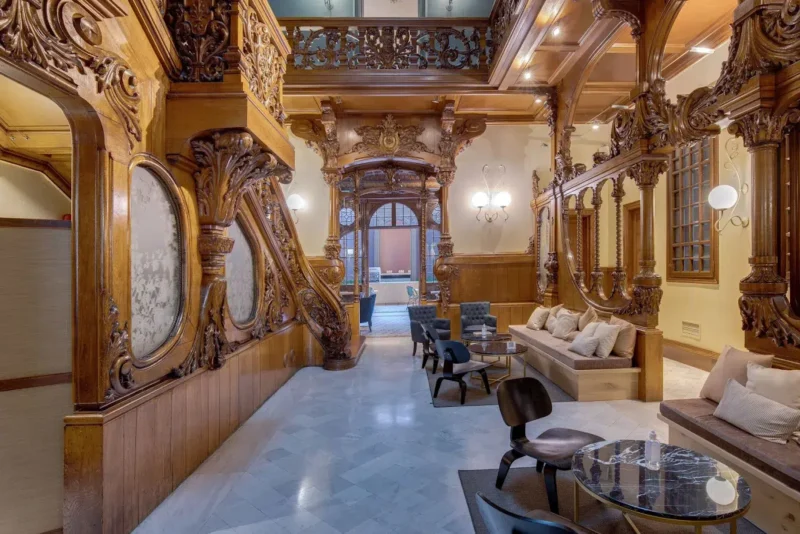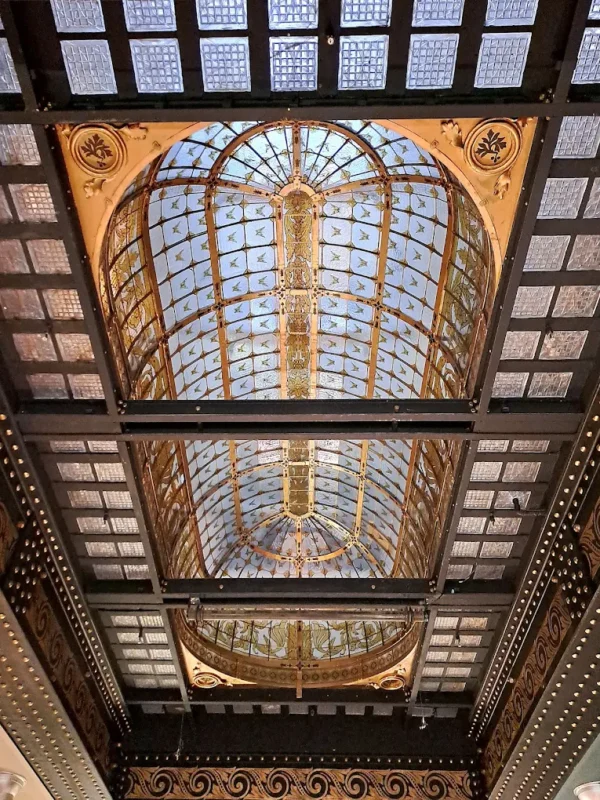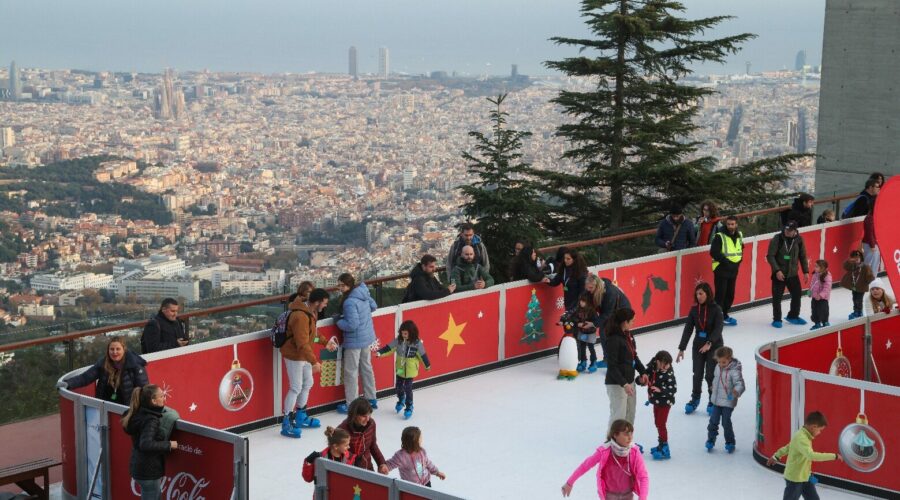Modernism in Barcelona is a world of details that whispers stories through its walls, ceilings and balconies. One of those corners that offers more than meets the eye is the palauet located at number 113 Passeig de Gràcia. Designed in 1906 by the renowned architect Pere Falqués i Urpí, this building is a classic example of Catalan modernism that becomes architectural poetry and hidden love.
The origin of a modernist jewel
The palauet, formerly known as Casa Bonaventura Ferrer, is a magical creation of Falqués. In the same year, he also gave life to the street lamps on Passeig de Gràcia, affectionately known as Bancs-Fanals. This building is distinguished by its sgraffito of butterflies and clovers, wrought iron balconies that add a sinuous touch to the whole, and the 57 carefully catalogued ceilings.
Passeig de Gràcia was not just a stroll for this family; it was an integral part of their bourgeois lifestyle. Doña Bonaventura Ferrer used to stop in front of the building and lose herself in daydreams, imagining herself admiring the city from the upper modernist balconies.
A gift of love in the form of a building
Behind this imposing modernist structure hides an exceptional and discreet love story. Josep Matheu Mercader, a respected member of the Catalan bourgeoisie, made a gesture of eternal love by buying the admired building for his wife. The story, discovered years later in a parchment hidden inside the building, tells this touching detail in the form of poetry.
The building was renamed Casa Bonaventura Ferrer in honor of his wife. This spectacular acquisition not only meant a change of residence, but a significant social climb for the family.
From family residence to luxury hotel
The palauet initially served as the residence of the Matheu and Ferrer family, who transformed its second half into six exclusive Royal Suites. One of them, the 1906, served as an intimate family space to host international clients of their textile business. The family turned the building into a sort of dream palace, filled with showrooms, mirrors and mesmerizing stained glass windows.
Today, the building breathes new life as Palauet Living Barcelona, a luxury hotel that maintains the legacy and essence of its modernist origin. Although restored, it retains treasures from the past, such as woodwork and ornamental stained glass, having been recognized in 1979 as a Historic-Artistic Heritage of Barcelona.
An obligatory stop in the heart of Barcelona
More than a century after its construction, the palauet stands as an example of the splendor of modernisme. The fascinating interplay of stone and iron that we see in this building encapsulates part of Barcelona’s history, brimming with details that offer a glimpse into the boom period of Passeig de Gràcia, which went from being a simple dusty road to becoming a coveted object of desire for the bourgeois class during the 19th century.
Walking along this iconic promenade, one should not miss the hidden splendor of the palauet. Although its stone façade may go unnoticed among other much more ostentatious ones, every element, from its balconies to its ironwork, dialogues with nature, a hallmark of the modernist style in which this building is inspired. This corner of Barcelona not only evokes an era of luxury, but also holds in its entrails stories of love yet to be discovered.
In short, the palauet is more than a luxury hotel; it is a testament to the art, love and history that drives Barcelona along its modernist streets. A wish fulfilled, a love story turned into stone and iron, transcending time and celebrating the richness of the city’s cultural legacy.
El Palauet Barcelona
Pg. de Gràcia, 113, Gràcia, 08008 Barcelona, Spain





